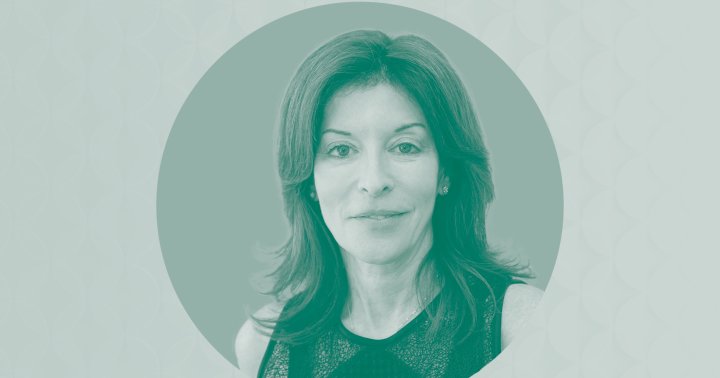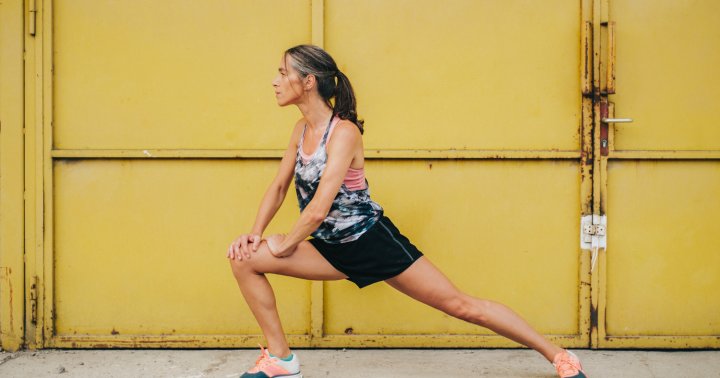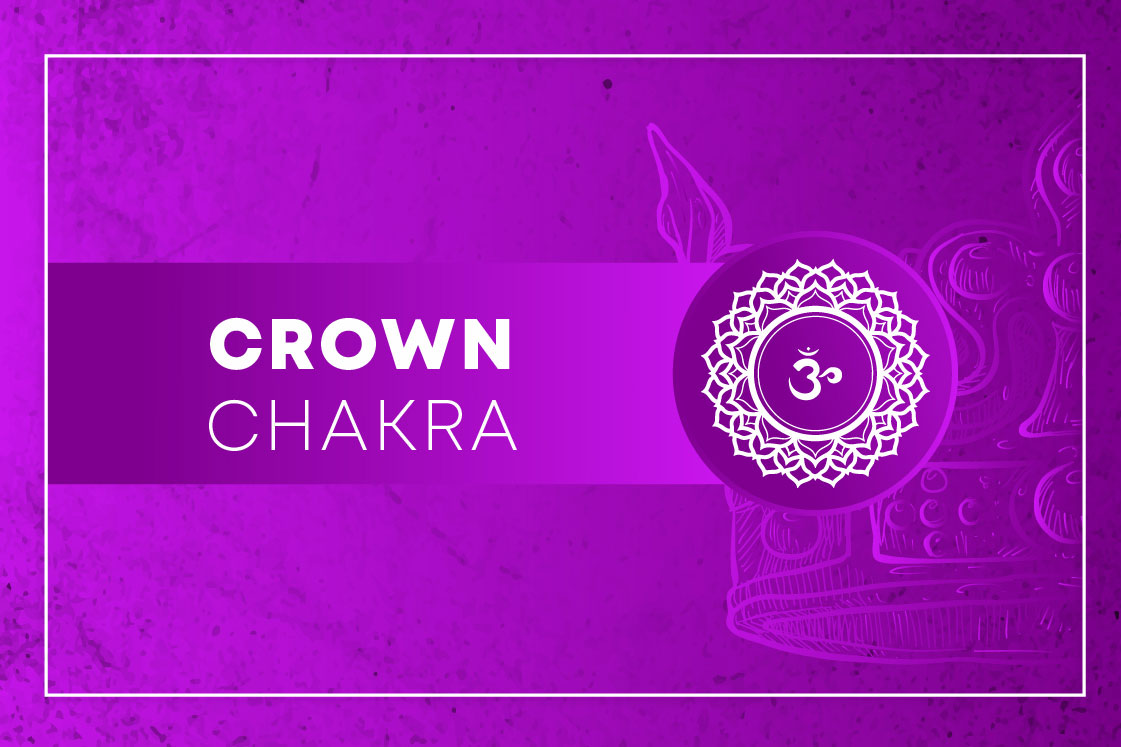Dean’s Weekly Workout Routine | Dean Pohlman | Better Man Podcast Ep. 032
Do I do Man Flow Yoga routines every day? Do I mix in resistance training? Do I run a few times a week? Is there anything else I do to maximize my physical health on a daily or weekly...

Hey guys, it’s Dean. Welcome back to the Better Man Podcast. Today is a solo episode in which I will discuss my weekly workout routine. So I’m giving you this because I want you to understand some of the things that I do on a weekly basis to take care of my personal, physical well-being. This is not, this is not me urging you to adopt my weekly routine entirely. This is me giving you some ideas on what I do. And maybe you can integrate some of that into your own weekly routine. Some things we’ll cover here are my morning routines: So what I do every morning to make sure that my body feels good, to make sure that I feel productive and mentally well throughout the day. We’ll also talk about the other things that I do throughout the day, things like walking and why I think that’s super important. How frequently I do that, how many times per day, and also what I try and focus on when I am walking. We’ll also talk about my resistance training workouts, which I do in addition to my daily yoga workouts, I do resistance training about three days per week. I’ll talk about what I do during those and what I try and focus on and some overall goals there.
And then I’ll talk about what I do in the evenings. So some things that I do that you can do too without much extra effort. These are things that I do while my wife is sitting on the couch with me. While we’re watching a TV show or just on my own. If I need a little bit of extra time to decompress and be on my own, this is where my evenings this is what my evenings look like.
All right. So let’s just jump straight into this. The first part of my weekly fitness routine is going to be my daily morning yoga and mobility sessions. And this is a combination of doing full body mobility and strength work that’s going to help my body feel good throughout the day. That’s going to remind me to have good posture. This is also an opportunity to work on specific areas that need extra attention. If my back needs a little bit of extra work, then I’ll do, you know, whatever poses or exercises are going to help that. If I’m feeling particularly stiff in one area, then I’ll do some exercises, some poses that are going to help with that. And this is mostly body weight, yoga, bodyweight exercises or yoga poses, things that you would find in Man Flow Yoga workouts.
So most of my morning yoga routines are things that I would personally do in my own morning yoga sessions. So if you’re looking for ideas, we do have a great morning yoga challenge that we put out recently in the program section. And then you also go to the workout library and just search morning. You’re going to find a lot of great exercises, a lot of great workouts that you can do in the morning that are very similar to what I personally do.
And then the what I do in the morning, it can vary from time to time. So sometimes I will be really excited about work and I’ll feel really focused. So I won’t need to do that much to get me into the state that I want to be for the day. So in those times I’ll probably only do 10 to 15 minutes of of yoga or stretching, or I’ll make sure to do whatever I need to do to make sure that my hips feel loose, so that my back feels good. I’ll do some core activation, some chest opening, some a little bit of ankle mobility work. I find that that helps my knees feel good. So just pretty much a full, a kind of an all purpose or a full body, kind of complete mobility, flexibility, strength and some stretch and some balance. And so that’ll be about 10 to 15 minutes. If I find that I need a little bit longer of a warm up, if I’m not feeling as focused, if I didn’t sleep as well, then I’ll take that workout into the 20 or 30 minute range and that’s when I’ll start to focus more on my breathing. I’ll focus more on my body awareness. And for me, when we get over, when we get past the 20 minute mark or past the 30 minute mark, that’s when I really start to notice the mindfulness benefits of yoga, and I notice them more throughout the day.
So I would encourage you to aim for that 20 to 30 minute mark, if you can, if you have the time for it. But if you’re just working on establishing that daily habit of doing something in the morning, then 10 minutes is great. You’re going to notice something with that for sure. But personally, for me, I noticed that the mindfulness benefits tend to occur when I’ve immersed myself in what I’m doing with my movement in the morning for 20 to 30 minutes.
I also, where I work out, I do have a pull up hour as well. So I will also I’ve noticed that I’ve started hanging on the pull up bar in the mornings as well, and that seems to help me a lot. I know that’s very good for your shoulders. It’s also great for your back, good for decompressing your spine. So and then if you’re just if you’re interested in upper body health at all or your spine hanging on a pull up is great. Also great for your grip strength, which is something that we don’t do enough of in yoga.
So yeah, that is what my morning yoga routine looks like. And for me that typically happens after I drop my son off for daycare or if my wife is taking them that day. So I usually don’t actually start that until 8:39, sometimes even 9:30. So it doesn’t have to be immediately after you wake up. I like to do it kind of as a way of starting my my work day after I get out the okay I fed myself I taking care of of my of my family. Now, before I get started working, I’m going to do some things that I’m going to do my my daily movement exercise, my yoga, because that’s going to help put me into the most productive state possible. And I’ll remember to to breathe throughout the day. I remember to be aware of my posture. I’ll remember to slow down and breathe from time to time. So anyways, that just helps set up my day very well and even 10 minutes is helpful.
So the next part of what I’ll do is walking. So walking is really important to me. I typically walk 1 to 2 time anywhere from 1 to 3 times per day. It’s usually twice per day, and I’ll do that in the morning with my dogs. I’ll take a 15 minute walk in the morning. That happens before I do yoga. So I’ve had people say that this works for them. I’ve also had them say the opposite works. So if you’re willing to experiment, I would say try doing a walk first and then doing morning yoga. Or if that doesn’t work for you, try doing your morning yoga first and then going for a walk. For me, I think walking is great. It takes less energy to get started with a walk than it does a yoga session.
And then when you do come back to that yoga session after a walk, you have more energy, you have more focus, and you can potentially push yourself and get a little bit more out of that yoga session. So for me, I go for that walk before I do yoga. It’s also a good warmup for yoga walking in general is great warm up for anything. So for me, that morning walk is really important and as I’m going through the walk, I will focus on my body. I will focus on my surroundings. I’ll look around at the trees, I’ll observed the houses, I’ll watch my dogs. I try to be present. I try to enjoy the walk. I don’t just do it to get it done. So I really try to use the opportunity to, to, to enjoy it.
And, and yeah, so I’ll do that in the mornings and then I will also walk at night and this can occur anytime from 6 to 9 p.m. really just depends on what’s going on. What usually happens is I’ll try and take my son in the stroller and go for a walk for about 15, 20 minutes. Sometimes he will cooperate, sometimes he doesn’t want to go in the stroller at all. So it’s just me and the dogs. Sometimes he wants to be a bit more active, so he’ll take the wagon or I’ll take his little toy car and then it turns into much more of a longer ordeal. But so I do try to get some walking in the evening as well. And then if I don’t get my evening walking in before my son goes to sleep, then I’ll do it after he goes to sleep. And then I’ll walk the dogs and you know, at that point it’s about 845, 9:00. So I try to be much more mindful, much more relaxed with those later walks. I try to really wind down when I’m doing those.
And then if I have time during the day or if I notice, I just need an extra break. Something to help break up the day. Frank feeling like, okay, I did a lot this morning. I need some time for my brain to process things. Then I will go for an early afternoon walk. I won’t say it has to be early afternoon. It could be any time in the afternoon and each time from like 12 to 4. And then I will try to make that walk a little bit longer with the goal of decompression mentally and emotionally. So I’ll spend 20 to 30 minutes on a walk around the neighborhood and again, as I’m doing that, I kind of just let my at that point, you know, I’ve already done stuff earlier in the day, so I use that as a chance to kind of process things not as mindful as I am in the morning, the afternoon. And as your day tends to go on, you get less and less mindful. So that’s something that you probably have noticed, even if you have not consciously told yourself that, but you will get less and less mindful throughout the day. So I kind of use my afternoon walks as an opportunity to process things rather than drilling myself in being present. So, walks, that’s another part.
And then we’ve got my resistance training workouts and I will do those three times per week. For a while I was doing it on my own and kind of coming up with different super sets. A super set is when you do one exercise, then you do another exercise, and then you do maybe another exercise anywhere from 2 to 5 exercises. And then you go back and you do those exercises again. So you’ll do like exercise A exercise B exercise C as one set, and then you’ll start that again and go back to exercise a, exercise B, exercise C as a second set. So super sets are great because they move from typically you’re going to move from one muscle group to another muscle group. So it allows you to workout continuously to keep your heart rate up and to get in a kind of a more efficient workout in less time. And also, it’s it’s it’s good for it’s good for getting your heart rate up. So you do get more of the cardio benefits. You can potentially build more muscle, burn more fat. Yeah, it’s just it’s an efficient way of working out.
So that was what I used to do. And then I started working with a trainer a couple of years ago and we still do super sets. Every one of my workouts does have a superset, but we’ll usually have one or two big exercises at the beginning of the workout where I’m doing something like a heavy deadlift or I’m doing heavy weighted squats or I’m doing weighted pull ups or something like that, and we won’t superset those as frequently. So however you get your resistance training in, I personally have chosen to work with a trainer just because it’s it’s something that’s really important to me. And I am not an expert in resistance training. So I could design my own workouts, I could do the research and learn how to do it. There are plenty of resources that will allow you to do that. For me, I just decided that that wasn’t going to be something that I spent my time on. So I am perfectly happy to pay someone a monthly fee to come up with workouts for me, to, you know, to coach me. So I work with Central Athlete, which is an Austin based company here that my trainer is Jesse O’Brien, and we actually have done some pretty cool partnerships with them in the past where we have taken a group of people following along to man for yoga and we have gotten them all started with the same weight training program, all working with the same trainer, progressing through the same workouts on a week to week basis.
So those went really well. If you are looking to get started with weight training, I think that’s an awesome resource. It is a bit pricier than you know, just it’s it’s you’re not just going to be buying like a $50 program and then getting lifetime access to it. This is more expensive than that. But you are getting one on one attention and you’re going to make progress and learn a lot more than if you are just by a single program. So I will say that. But, you know, if that’s worth it to you, then central athlete is a really great option. If not, then there are plenty of free resource, plenty, plenty of free resources on the internet or even lower cost options on the Internet. That will give you and give you ideas on creating workouts for yourself.
For me, I’ve just found that most of us do have some sort of limitations. And if you just follow along to a program and you unquestioningly do every exercise prescribed, even if it’s somewhat uncomfortable, then you’re not… You’re kind of, you know, you’re hindering your progress. So the benefit of working with a benefit of having a personalized program is that you are doing those exercises that you can do without pain. Also addressing the exercises that are going to help to build strength and mobility in exercises that cause pain. So you’re addressing those root causes that cause pain and you’re avoiding those exercises. That’s that just at this point in time in your fitness don’t work well for your body.
So for me, resistance training is really important. That’s going to be how I build most of my muscle. I don’t rely on my yoga workouts to build muscle. They do help tremendously with indirectly building muscle in terms of improving muscle activation, in terms of helping with mobility and flexibility. And then also, I mean, with all the recovery that you get from yoga, the stretching and the so if I didn’t do man flow yoga, I would not be able to lift and to do resistance training the way that I currently do it, because my body would hurt all the time. I wouldn’t be as good as I am at lifting. I would not be able to lift as much weight. I also would not be as muscular as I am now if I didn’t do the things that I do with man flow yoga. But just doing man flow yoga on its own is not going to be enough to build the type of muscle that I personally want to build. But just doing weightlifting on its own, I would not be able to do it because my body would probably just fall apart if I wasn’t doing some man flow yoga. So that’s what I’ll say about that. And yeah, resistance training.
I’ll also say that resistance training for me has a huge impact on my sleep. I need to get out that energy through resistance training. I need to have that part in the workout where I’m really straining to get the last few reps and really pushing myself and shaking and, you know, really pushing myself. But then I’ll sleep really well. So for me that’s really important. Helps with sleep. So there we’ve got resistance training, we’ve got my daily yoga, we’ve got my walking.
And then we’ve got evening. So in the evening. And this is something that, you know, you might be hearing this and thinking There’s no way I have time to do all of this. But for me, my evening routine is something that I can easily do while my wife is sitting on the couch, and if she’s on her phone or if she’s watching TV so it doesn’t take any extra time, this is just instead of sitting down on the couch doing some sort of casual stretching or I’m doing some mobility work with a foam roller or a lacrosse ball. So this just depends on what my body needs. At the end of the day, if I if I worked out or if I did a resistance training session earlier and I know that I’m going to be tight in the morning, then I’ll do some stretches to kind of anticipate where that tightness is going to show up. And that helps me be less sore and less stiff the next day. If I have been sitting a lot that day, then I will do poses and I will do exercises that help to stretch muscles that have gotten tight and also help to work muscles that were inactive while I was sitting or, you know, so I’ll work on poses that help to directly counter poor posture or directly counter a sitting position.
So and that all and I don’t do this every night. You know, my evening mobility or evening stretching could be anywhere from 3 to 5 times per week. I do find that I feel better when I do this. I find that I have better sleep when I concentrate on stretching while focusing on my breathing, focusing on releasing tension as I’m exhaling. So it does help me sleep. It also helps to prevent soreness the next day and I actually feel a little bit better about, you know, sitting in front of the TV. If I am watching TV while I’m doing this, the hardest part of doing that is just getting started. So it might feel like this is going to be so much effort getting into a stretch instead of watching TV. But if you can just start the stretch, then it doesn’t feel like that much effort and your body’s going to feel a lot better for it at the end. You know, your body is going to feel a lot better for it.
So so these are the things that I do for my physical fitness on a weekly basis, and there are some carryover into my mental well-being as well. With a lot of these practices, it’s hard to separate the two. But I want to talk more also about my what I do for my mental and my emotional well-being, because that’s the focus of this podcast, right? I want to get beyond just working out and also get into what we do for our mental and emotional well-being. So in my next solo episode, two weeks from the publishing of this episode, I’m going to talk about some things that I do on a weekly basis for my mental and my emotional well-being. So make sure to come back in to check that out. Subscribe So you don’t miss out on New episodes, go live every Thursday typically, and then next week we’re going to have our next guests on the podcast. So that’s the format that we’ve been using for season two. We do a solo episode with me and then the next week we do a guest episode.
This week in particular, this kind of these last couple episodes and I know at least one more episode in the future. We’ve been focusing on on men’s test… on testosterone, a lot. I don’t know how or why that is better focus, but that has been a big topic on a lot of the conversations that we’ve had. We’ve gotten a little bit more into specifically men’s wellness and men’s physical wellness categories, not as much as not not much on the exercise side, more on the things that aren’t as easily controlled as as as exercises. So check in. I think there’s a lot I think you’re really going enjoy those episodes. We had a last week, we had an episode with Doctor Judson Brandeis, who is a men’s sexual wellness doctor or sexual medicine expert, and that was a really great episode. I learned a ton on that episode. So go back and check that out.
We had a really good one with Blake Bowman and we’ve also got another one coming out with Joshua Whalen in the near future. So check out those episodes. I think it’s going to be really interesting and helpful for you. I found it personally very helpful and inspiring, so I hope you are getting a lot out of the better Man podcast.
If you have not already left to review, please consider doing so. It’s really easy to do and do that through Apple Podcasts or through Spotify. Just leave a five star review and then, you know, tell people why you like it. Leave a little text review as well. That goes with it. All right. I’m terrible at outros. Thank you for listening to the Better Man podcast. Hope you’re enjoying it. Hope it is inspiring you to be a better man. And I’ll look forward to seeing you on the next one. Bye.
[END]

 Aliver
Aliver 
































